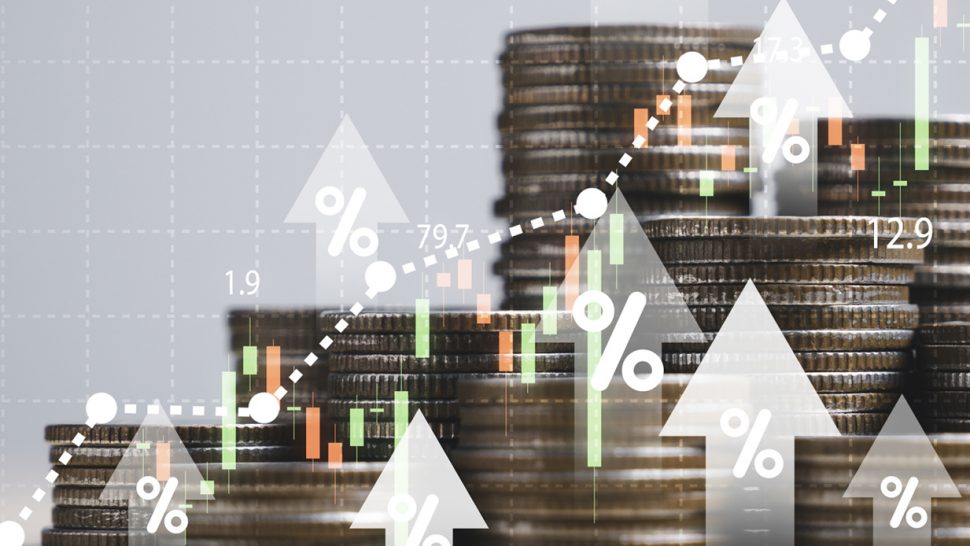Investment Commentary and Outlook

Q4 – an up-and-down end to a year to forget
Overall, 2022 was not a year to dwell on. It staggered to a close with a Santa rally of sorts in November and another down month in December.
A US dollar investor with all their assets in their home market would probably have been down some 20% on their equity holdings and close to 15% on their bonds over the course of the year. A double whammy of such magnitude was last seen in the 1930s.
A UK investor was not much better off, unless largely invested in USD-denominated energy, mining, tobacco and pharma stocks. The FTSE 100 (market cap weighted), with just such a mix, was the only major index to finish 2022 at a higher level than it opened – albeit by less than 1%, which we might generously call a draw.
The FTSE 100 Equally Weighted Index ended lower by 16%, while the even more domestically oriented FTSE 250 fell by 20%. The situation was not far removed in Europe, with France down 10% and Germany 16%, although the Stoxx 50 – representing the cream of European blue-chips, with a lot of dollar earnings – was down by only 5%.
Investment Commentary Outlook for 2023 – the key issues
Five macroeconomic themes dominate the headlines as the new year opens: inflation, interest rates, recession, Ukraine and the ongoing Covid situation in China.
Inflation:
The tipping point in terms of headline inflation might already have occurred in the US. Indigenous production of oil and gas, which lessened the impact of the rise in energy prices that followed the invasion of Ukraine, has helped. The UK and Europe are further behind – hardly surprising, given the previous dependence on energy from Russia. There is also more concern regarding the corrosive damage from an escalating wages/prices cycle – especially in the UK, where organised labour seems keen to reprise the 1970s.
These reservations notwithstanding, there seems little doubt that the first half of 2023 will bring a pronounced drop in the rate of headline inflation as the year-on-year effects of the cyclical components fall out of the equation. Where inflation goes beyond that is debatable, with economists firmly divided.
There is a strong argument that the structural component of inflation is first and foremost a monetary phenomenon and that the surge in M2 money released during the pandemic has yet to be accommodated. The cash – paid directly to consumers – initially ended up parked in current accounts throughout the lockdown period. As of now, that Pandora’s box is well and truly open. (Note that the wave of M2 money resulting from QE during the financial crisis never reached the consumer. It went directly into bank balance sheets as Tier 1 reserves were raised, under government mandates, from 5% to 15% of risk assets – and it remains locked in place today).
The cumulative rise in M2 in the US since the onset of the pandemic is over 30%. This is equivalent to, say, five years of nominal GDP growth of c.6%. With real GDP in the US likely to account for 1-2% of nominal GDP at best, structural inflation at 4% or higher could plague the US economy until well into the 2020s. So how would the Fed react, not least in light of its inflation target of 2%?
Interest rates:
A reduction in the rate of inflation is the main objective of central banks and is a key measure in setting interest rates, which are in turn the single most important factor controlling the price of bonds (directly) and equities (indirectly). The stated policy of the Fed is to push the Federal funds rate to a level sufficient to crimp the economy and then leave it elevated for an extended period, thereby taking the steam out of the labour market and, hopefully, squeezing inflation.
The rate necessary to do so is thought to lie either side of 5%. This process has been described as ‘raise rates until something breaks’. The Fed clearly believes that inflation will be the first thing to break. The contrary view is that the economy will break first and will do so spectacularly, forcing the Fed into a U-turn on rates – possibly as soon as H2 2023 – and triggering the start of a new bull market.
The obvious trap for equity bulls here is that the economy does not break but merely slows – leading to a mild recession – and inflation proves sticky, at 4% or higher, once the cyclical component has worked through the system. Investors must come to terms with interest rates of around 5% for some while under this scenario.
The fall in equity prices over 2022, then, reflects not much more than an appropriate de-rating matching a rise in rates from essentially zero to a ‘new normal’ – just like the old normal, going back to pre the financial crisis – of 4-5%. And this is before corporate earnings come up against a recession.
Recession:
Wherever you look at the moment, economic indicators – notably PMIs, freight rates and commodity prices – are broadly pointing to a slowdown. The conflicting factor relates to labour, where the lack of available workers is keeping labour markets tight across Western countries. The buoyancy in employment, alongside generally healthy post-Covid consumer balance sheets, has raised hopes of no worse than a shallow recession – but maybe a prolonged one if high interest rates keep a lid on consumer spending and construction, especially housing.
This would not be an environment that would encourage business investment. An exception might be climate-change activity, where government intervention could be an important factor. Q3 numbers hit consensus on the corporate side, although consensus was revised down by around 5% in the run-up to the results. A similar process seems to have started in respect of Q4 reporting. Outlook comments for 2023 would typically accompany the Q4 reports, starting in February.
Ukraine:
You might as well toss a coin on this. Note, though, that rebalancing in oil and gas markets is under way. The speed with which Europe has boosted sea-borne gas supplies, along with the associated infrastructure to handle LNG tankers, is noteworthy.
China and Covid:
The rationalisation of the China impasse came suddenly in the end. The population unrest caused by the lockdowns combined with the malaise in the property sector to bring a miss on the GDP growth targets in 2022 and generate real political problems for President Xi. The outcome was an abrupt lifting of pandemic restrictions and an injection of more liquidity into the financial system to help ease the strain on ailing property companies.
What followed was inevitable. The omicron strain, which is still dominant worldwide, could only spread rapidly among the unvaccinated or poorly vaccinated population. The outcome is likely to be acquired immunity within two to three months or maybe less, with economic disruption due to labour-force absences in the meantime as the infection spreads – although, with a bit of luck, not a matching rise in fatalities.
A rebounding economy in China should be a counterinfluence to a recession in the West once the infection wave has passed, although it will probably bring more pressure on available oil and gas supplies in its wake. Meanwhile, President Xi is off the Christmas card lists of many Western leaders.
Conclusion
In projecting the investment scene for 2023, investors fall into two broad camps: basically, ‘We have probably seen the worst’ and ‘The worst is yet to come’. These two groups are not far apart in many respects, but they differ in two crucial (and linked) areas.
Those in the ‘worst is over’ crowd believe that disinflationary forces are sufficiently strong that inflation will go down and stay down, leading central banks to reduce interest rates before the year’s end and thereby unlocking a new bull market in equities and bonds, even if corporate earnings are under pressure. Conversely, the other side reckon that headline inflation will decline steadily but core inflation will not, with the two converging at a level unacceptable to central banks.
As the Fed Chairman continues to state, rates will ‘go higher and stay higher’ until the structural drivers of inflation are finally wrung out of the system. This view points to more turbulence ahead.
So how will the dichotomy be resolved? And when? Both questions are likely to be answered together, in the sense that the impact of recession and the unwinding of the cyclical element to inflation should be visible by mid-year.
At this point it may well be possible to take a more considered view as to how 2023 will end (diary note: don’t go on holiday in July). Hopes obviously run for the first scenario, but nagging doubts point the other way. The 2022 shakeout has moved things along the road to the ‘new normal’ of higher yields on bonds and lower ratings on equities but, it has to be said, not as yet to the end. A
volatile year is in prospect, but do not rule out closing at modestly higher levels for equities if the outlook at that point is for stable or declining central bank policy rates over 2024.
January 2023
Fiske plc. Registered office: 100 Wood Street, London, EC2V 7AN
Member of the London Stock Exchange Authorised and Regulated by the Financial Conduct Authority
Registered in England No 02248663 VAT No. 489 1881 31





